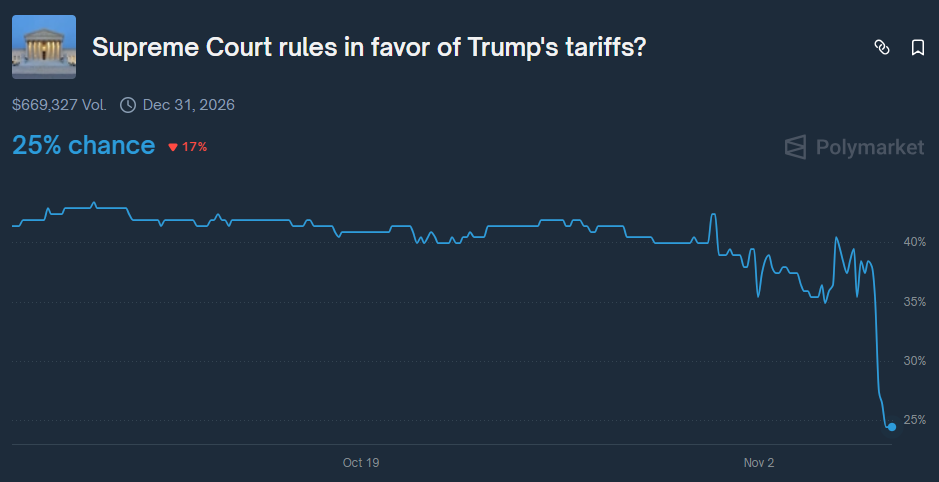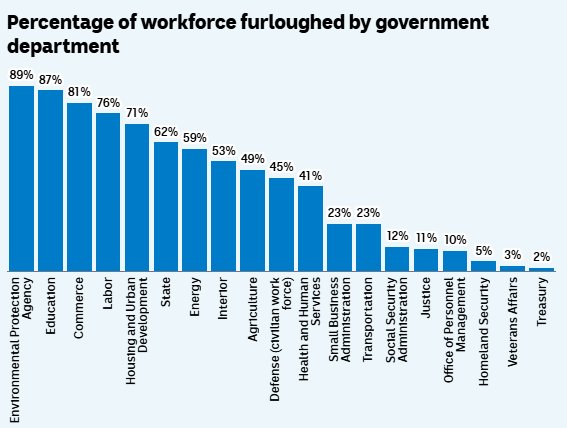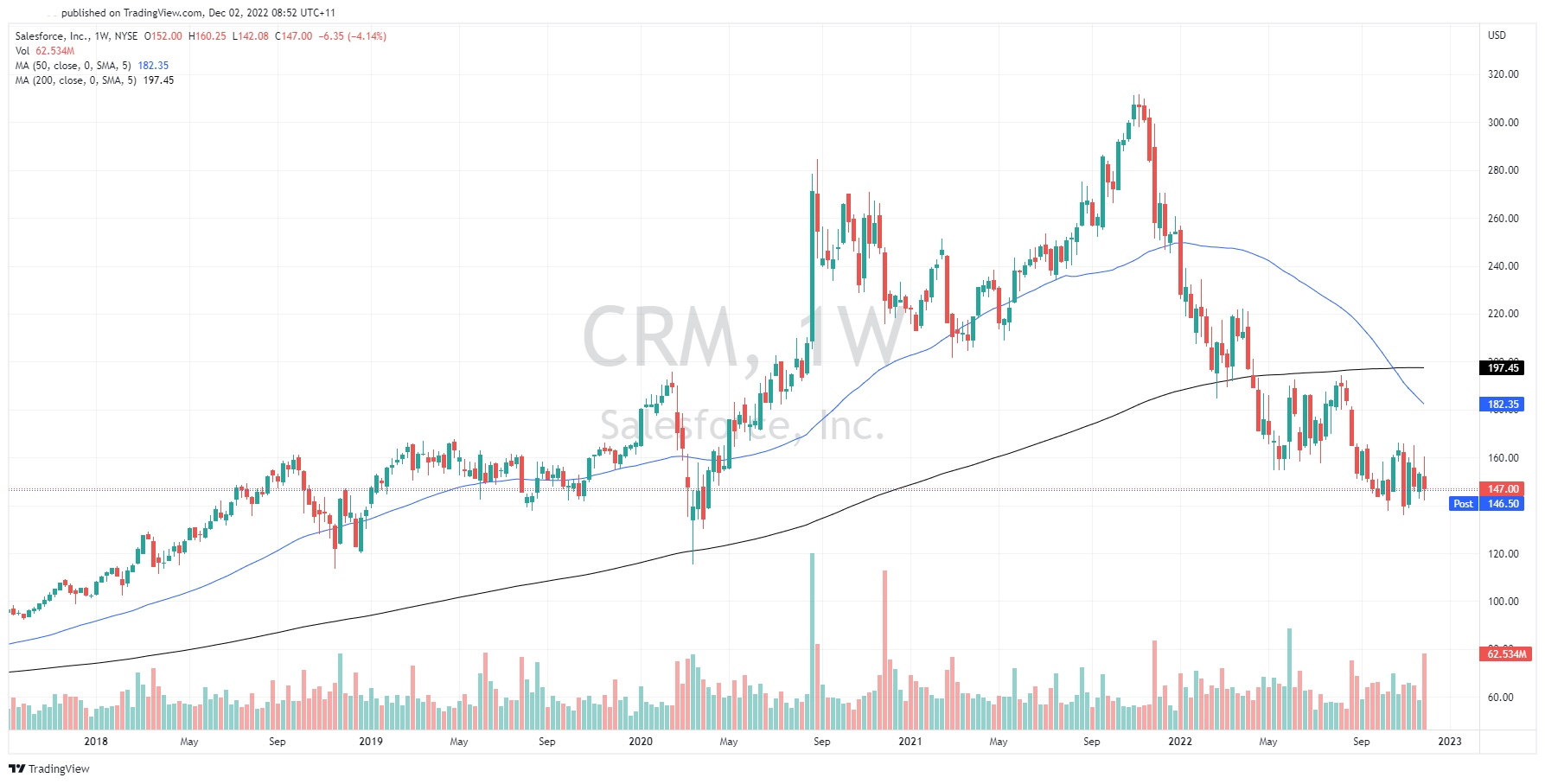市場新聞與洞察
透過專家洞察、新聞與技術分析,助你領先市場,制定交易決策。

Artificial intelligence stocks have begun to waver slightly, experiencing a selloff period in the first week of this month. The Nasdaq has fallen approximately 2%, wiping out around $500 billion in market value from top technology companies.

Palantir Technologies dropped nearly 8% despite beating Wall Street estimates and issuing strong guidance, highlighting growing investor concerns about stretched valuations in the AI sector.
Nvidia shares also fell roughly 4%, while the broader selloff extended to Asian markets, which experienced some of their sharpest declines since April.
Wall Street executives, including Morgan Stanley CEO Ted Pick and Goldman Sachs CEO David Solomon, warned of potential 10-20% drawdowns in equity markets over the coming year.
And Michael Burry, famous for predicting the 2008 housing crisis, recently revealed his $1.1 billion bet against both Nvidia and Palantir, further pushing the narrative that the AI rally may be overextended.
As we near 2026, the sentiment around AI is seemingly starting to shift, with investors beginning to seek evidence of tangible returns on the massive investments flowing into AI, rather than simply betting on future potential.
However, despite the recent turbulence, many are simply characterising this pullback as "healthy" profit-taking rather than a fundamental reassessment of AI's value.
Supreme Court Raises Doubts About Trump’s Tariffs
The US Supreme Court heard arguments overnight on the legality of President Donald Trump's "liberation day" tariffs, with judges from both sides of the political spectrum expressing scepticism about the presidential authority being claimed.
Trump has relied on a 1970s-era emergency law, the International Emergency Economic Powers Act (IEEPA), to impose sweeping tariffs on goods imported into the US.
At the centre of the case are two core questions: whether the IEEPA authorises these sweeping tariffs, and if so, whether Trump’s implementation is constitutional.
Chief Justice John Roberts and Justice Amy Coney Barrett indicated they may be inclined to strike down or curb the majority of the tariffs, while Justice Brett Kavanaugh questioned why no president before Trump had used this authority.
Prediction markets saw the probability of the court upholding the tariffs drop from 40% to 25% after the hearing.

The US government has collected $151 billion from customs duties in the second half of 2025 alone, a nearly 300% increase over the same period in 2024.
Should the court rule against the tariffs, potential refunds could reach approximately $100 billion.
The court has not indicated a date on which it will issue its final ruling, though the Trump administration has requested an expedited decision.
Shutdown Becomes Longest in US History
The US government shutdown entered its 36th day today, officially becoming the longest in history. It surpasses the previous 35-day record set during Trump's first term from December 2018 to January 2019.
The Senate has failed 14 times to advance spending legislation, falling short of the 60-vote supermajority by five votes in the most recent vote.
So far, approximately 670,000 federal employees have been furloughed, and 730,000 are currently working without pay. Over 1.3 million active-duty military personnel and 750,000 National Guard and reserve personnel are also working unpaid.

SNAP food stamp benefits ran out of funding on November 1 — something 42 million Americans rely on weekly. However, the Trump administration has committed to partial payments to subsidise the benefits, though delivery could take several weeks.
Flight disruptions have affected 3.2 million passengers, with staffing shortages hitting more than half of the nation's 30 major airports. Nearly 80% of New York's air traffic controllers are absent.
From a market perspective, each week of shutdown reduces GDP by approximately 0.1%. The Congressional Budget Office estimates the total cost of the shutdown will be between $7 billion and $14 billion, with the higher figure assuming an eight-week duration.
Consumer spending could drop by $30 billion if the eight-week duration is reached, according to White House economists, with potential GDP impacts of up to 2 percentage points total.


AutoZone Inc. (NYSE: AZO) reported the latest financial results for its first quarter of fiscal 2022 (12 weeks) that ended on November 19, 2022. The largest US retailer of aftermarket automotive parts reported revenue of $3.985 billion (up by 8.6% year-over-year) vs. $3.865 billion expected. The company reported EPS of $27.45 per share for the quarter (an increase of 6.9% year-over-year) vs. $25.258 per share expected.
AutoZone opened 35 new stores during the quarter. ''I would again like to thank and congratulate our AutoZoners across the Company for their ongoing commitment to deliver great results and exceptional customer service. Their efforts allowed us to deliver solid same store sales results on top of last year’s very strong 13.6%. While our Commercial sales growth accelerated 15%, our retail sales also grew impressively from a year ago.
We continue to believe our initiatives to grow our business position us well for the remainder of our fiscal year,'' Bill Rhodes, Chairman, President and CEO of AutoZone said in a press release after the announcement of the latest results. As of November 19, 2022, the company had 6,978 stores within the United States (6,196), Mexico (706) and Brazil (76). The stock was down by around 5% on Tuesday at $2383.48 a share.
Stock performance 1 month: -3.77% 3 months: +12.70% Year-to-date: +14.56% 1 year: +18.68% AutoZone price targets Wells Fargo: $2850 Truist Securities: $2533 Raymond James: $2500 Argus Research: $2330 Jefferies: $2450 JP Morgan: $2660 Wedbush: $2350 Citigroup: $2520 UBS: $2260 Goldman Sachs: $2296 AutoZone is the 358 th largest company in the world with a market cap of $45.54 billion. You can trade AutoZone Inc. (NYSE: AZO) and many other stocks from the NYSE, NASDAQ, HKEX, ASX, LSE and DE with GO Markets as a Share CFD. Sources: AutoZone Inc., TradingView, MarketWatch, MetaTrader 5, Benzinga, CompaniesMarketCap


The major American Indices have begun the last month of the year with in an extremely bearish state as recessionary fears rise to the surface again. With the positive sentiment relating to a potential pivot from the federal reserve seemingly disappearing, thoughts of a hard landing have become increasingly prominent. Even with an expected slowdown in interest rate hikes many analysts fear that it won’t be enough to pull the economy out of a recession or even a soft landing.
Technical Analysis The S&P500 has seen a major pivot off its long term down trend. The index has fallen by nearly 4.5% too begin the month and is showing a very similar price action to the three last downward moves. In addition, the 200-day moving average has once again acted as significant resistance for the index as it tried to reverse out of the down trend.
The RSI has also seen a break of its upward trend adding to the confirmation of the overall breakdown as buying has become exhausted. Moving forward, there is likely to be some potential support in the short term near 3900. However, if this support fails then the secondary target or support levels is a 3800 and then 3504 after that.
Therefore, there is potentially a large swing to the downside if the sentiment becomes worse and selling continues. The NASDAQ in particular has been following a similar trend to the S&P500 whilst the Dow Jones Index has been the more resilient of the US Indices. However, both of them have also felt the selling pressure from the S&P500 and the negative sentiment trickle down.
The NASDAQ in particular has faced a difficult time as the growth and technology sectors are smashed with the recessionary talk and inflationary pressures. With the end of the year fast approaching, the prospect of a Santa rally looks less promising with the sentiment in the market at the moment.


How to use Arbitrage trading to increase profits Professionals in finance like to use hard to read and complicated language to make what they do much harder and more complicated than it sounds. However, when it comes to arbitrage, it is actually a relatively simple concept that can be used in trading, to develop an accurate system that can be used in various markets. The Law of One Price In order to understand Arbitrage trading, a trader needs to understand the law of one price.
It states that the same goods sold in different markets in conditions, free of competition and expressed in the same currency, must be sold at the same price. Although this is an economic theory, the principles follow into financial markets. This means that in an efficient market, prices for the same asset cannot be different.
In practice, this is not always the case or rather it is not always the case straight away and his is where arbitrage opportunities exist as the market tries to move the prices into one. What is an Arbitrage? An arbitrage is when the law of one price has not yet been realized.
Essentially, the market is in the process of converging the prices. The best example is that of dual listed companies. These are companies who have shares listed on multiple exchanges.
Initially the price may be different due to exchange rates, different number of shares on issue. However, the relative value for each share must be the same. Usually, they are larger companies or multinational companies.
For instance, BHP is listed on both the ASX and the London Stock Exchange. The strategy can involve selling the shares on the exchange where it is more expensive and buying them back on the cheaper exchange or the alternative and profiting the difference. Other arbitrage opportunities can exist in companies that are primarily traded on an exchange but also have an over the counter, (OTC) listing.
These OTC listings are often much more illiquid allowing for more arbitrage opportunities Additionally, the primary market will usually be the lead pricing target, whilst the OTC or secondary market will attempt to move towards that price. Merged Arbitrage This strategy involved targeting companies that are in the process of being taken over or bought out. The acquirer will need to put an offer per share in order for a take-over to occur.
This gives the market a value for the shares. Generally speaking, the price will have to move towards the offer, especially if it is accepted. In a recent example, company Tassal formally TGR.AX, announced it was being bought out by a private equity firm.
There were previous offers made at $4.67, $4.80 and $4.85 per share before the final offer came at $5.25 a share. It can be seen from the price chart that the share price did not reach $5.25 immediately. The interesting thing to note here is that even though the final and accepted offer came in at $5.25 on the day of the announcement the price only reached $5.12 still $0.13 short of the offer.
This represented an arbitrage opportunity of $0.13 for savvy traders and investors. Although the actual % gain was not very high, the relative certainty of the price target made this trade a potential big winner. Opportunities like this are not always perfect and deals may not always follow through, but a skilled trader can develop a very strong system around this premise.
Overall, arbitrage trading may seem difficult but in reality, the theory is relatively straight forward. Finding mispricing within the market and capitalising on them can take some practice but they can also offer longer and shorter terms edges when the market is not providing other sufficient trading opportunities.


As a new trader, riding the emotional ups and downs can be a very difficult task. It is human nature to feel the pain of a losing trade. The losing often outweighs the positive feeling of any winning trade.
Dealing with the emotion of trading can be an incredibly difficult task. It can cause even the best system to fail. A trading journal especially early on in a trading journey can provide important feedback and information about the effectiveness of an edge.
The reality is that early on profit and loss can be terrible measure of an individual’s trading ability which is why a journal is so essential. There are many different formats and styles of journals that can be used. Some like to base their journal around a calendar.
Others like to pick out their best and worst trade each day and analyse them intensely. In the end, it doesn’t matter what style is chosen if a consistent structure is followed. Both quantitative and qualitative measures that ca be used to measure performance.
What to include in your journal? Below is a breakdown of elements that can be analysed in the trading journal. Initial trade idea – This is the overall basis of the trade, it can be related to a technical pattern, fundamental factor such as a news or a mix of both.
Some traders call this the trade hypothesis or thesis. In its most simple form, it is the very reason a trader enters into a trade. When journaling, it is important to evaluate the strength of the idea, whether it was correct and why or why not the trade was validated or invalidated.
It is also worth noting if the idea is a common one, such as news catalysts, repeating technical patterns. This can also be elevated by understanding how different trade ideas work together to create stronger overall trade ideas. Entry – Breaking down the key elements of the trade are important aspects to a journal.
More specifically outlining whether an entry was ideal, correct and managed well. Was the entry chased or was patience shown to achieve a more ideal entry. The entry is also a part of a trade with heightened emotion.
Therefore, journaling how emotions were managed and ways to improve emotional management is an important aspect of reviewing the entry. Exit – It goes without saying that the exit is the reciprocal of the entry and just as important. Analysing whether the exit was correct at both the time and in hindsight is an important step.
By continuously analysing both entries and exits, a trader will likely see an improvement in this aspect of their trading. In addition, they will potentially remove external factors such as emotion and noise from other influences such as twitter. Sizing – Sizing is an extremely tricky area of trading to master and there are many different theories on what sizing tactic is the best for each trade.
Some traders like to increase size depending on how strong a trade set up is whilst other like to have more consistent sizing strategies regardless of the strength of a trade. When reviewing it is important to make note of whether the sizing strategy worked. Trading with too much size can affect the active management of a trade as a trader can lose sight of the trade at hand and become too concerned about the potential outsizes loss.
Trade management – Whilst all the above can all constitute some level of trade management reviewing, analysing the whole management of the trade is vital. This can include the effectiveness in taking profits or losses and how the trader has dealt with their emotions. Management of fear and greed are the two most common emotions that a trader feels.
Grading – Having some quantitative measure even though it is subjective can help classify many trades over a long period of time. Using either letters or a number ranking can be just one method. This allows for a trader to identify their best performing trades and where the strongest edge is.
This list should not be seen as exhaustive, and traders can tinker and adjust to suit their own trading strategy. Reviewing the journal. It is important to review the journal at the end of a set time whether it be weekly or monthly to see if common mistakes are occurring or a theme is emerging.
If the same mistake keeps occurring, it may act as point of emphasis for future journaling or improvement. Ultimately, using a journal can accelerate the learning curve drastically especially for new traders.


The world’s leading customer relationship management company Salesforce Inc. (NYSE: CRM) announced its latest financial results after the market close in the US on Wednesday. The company beat both revenue and earnings per share (EPS) estimates. Revenue reported at $7.84 billion (up by 14% year-over-year) vs. $7.827 billion expected.
EPS reported at $1.40 per share vs. $1.217 per share estimate. ''We had a solid quarter with revenue of $7.84 billion, up 14% year-over-year or 19% growth in constant currency, and record operating margin,'' Marc Benioff, Chair & Co-CEO of the company said in a press release. ''We’re grateful to our customers for their commitment, especially as we help them succeed in this challenging environment. There’s never been a more important time for our customers to connect with their customers in a whole new way,'' Benioff added. Salesforce also announced a departure of company Co-CEO, Bret Taylor. ''I am grateful for six fantastic years at Salesforce,'' Taylor said in a statement on the company's website. ''Marc was my mentor well before I joined Salesforce and the opportunity to partner with him to lead the most important software company in the world is career-defining.
After a lot of reflection, I've decided to return to my entrepreneurial roots. Salesforce has never been more relevant to customers, and with its best-in-class management team and the company executing on all cylinders, now is the right time for me to step away,'' Taylor concluded. Taylor is set to leave his position on January 31, 2023.
The stock was down by around 9% on Thursday, trading at $144.33. Stock performance 1 Month: -1.86% 3 Month: -6.46% Year-to-date: -43.49% 1 Year: -45.02% Salesforce price targets Jefferies: $230 B of A Securities: $200 Canaccord Genuity: $180 Truist Securities: $210 Cowen & Co.: $195 Wedbush: $200 Deutsche Bank: $200 Barclays: $180 Morgan Stanley: $250 BMO Capital: $172 JP Morgan: $200 Salesforce Inc. is the 78 th largest company in the world with a market cap of $143.57 billion. You can trade Salesforce Inc. (NYSE: CRM) and many other stocks from the NYSE, NASDAQ, HKEX and the ASX with GO Markets as a Share CFD.
Sources: Salesforce Inc., TradingView, MarketWatch, Benzinga, CompaniesMarketCap


Intuit Inc. (NASDAQ: INTU) reported its latest financial results for the first quarter of fiscal 2023, which ended October 31, after the market close in the US on Tuesday. The US software company beat both revenue and earnings per share (EPS) estimates for the quarter. Intuit reported revenue of $2.597 billion (up by 29% year-over-year) vs. $2.497 billion expected.
EPS reported at $1.66 per share (an increase of 8% year-over-year) vs. estimate of $1.194 per share. ''We had a strong first quarter as we innovated and delivered on our strategy to be the global AI-driven expert platform powering prosperity for consumers and small businesses,'' Sasan Goodarzi, CEO of the company said in a statement. ''We continue to see proof that the benefits of our financial technology platform are more mission-critical than ever to our customers in an uncertain macro environment,'' Goodarzi added. The stock was down by 1.54% on Tuesday at $378.96 a share. Stock performance 1 month: -2.68% 3 month: -11.31% Year-to-date: -40.27% 1 year: -41.10% Intuit price targets Keybanc: $450 Morgan Stanley: $520 Credit Suisse: $500 BMO Capital: $467 Barclays: $490 Wells Fargo: $525 Stifel: $475 Citigroup: $538 Deutsche Bank: $560 Intuit is the 118 th largest company in the world with a market cap of $108.70 billion.
You can trade Intuit Inc. (NASDAQ: INTU) and many other stocks from the NYSE, NASDAQ, HKEX, ASX, LSE and DE with GO Markets as a Share CFD. Sources: Intuit Inc., TradingView, MarketWatch, MetaTrader 5, Benzinga, CompaniesMarketCap

